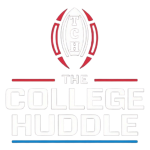
Dillon Gabriel
The Big Ten is emerging as the new standard-bearer in an era of increasing parity in college football. The Southeastern Conference (SEC) had consensus recognition of being the dominant force in college football, with fans proudly flaunting their conference’s championship success and top-tier teams as evidence of its superiority. However, the tides are shifting. The most recent AP Top 25 Poll showcases this power shift, as four Big Ten teams—Oregon, Ohio State, Penn State, and Indiana—sit inside the top five.
This unprecedented showing not only highlights the rise of the Big Ten as a conference but also challenges the long-standing narrative that the SEC is the best by virtue of its top-heavy dominance.
The SEC’s Hypocrisy: From Top-Heavy Powerhouse to Depth Advocate
For years, SEC fans have leaned heavily on the argument that their conference was the best because it boasted the most top-tier teams. With perennial powerhouses like Alabama, Georgia, and LSU, the SEC routinely placed multiple teams in the top 10, and their run of national championships from the mid-2000s to the 2010s backed up their claims. This allowed SEC fans to dismiss other conferences like the Big Ten, which, while strong in overall depth, did not produce as many national champions during that period.
The narrative was simple: the SEC had the most elite teams, making them the best college football conference.
However, the landscape of college football is evolving, and the hypocrisy of SEC fans has become clear. In recent seasons, the SEC’s top-heavy nature has waned, with Alabama showing signs of decline, LSU falling off after its 2019 championship, and teams like Georgia carrying the bulk of the load. Meanwhile, the Big Ten has not only matched but exceeded the SEC’s top-tier output while maintaining its strong depth across the conference.
This season, the SEC’s argument has shifted from touting top-tier teams to boasting about depth, an ironic twist considering it’s an argument SEC fans used to dismiss the Big Ten. Now, as the Big Ten holds four teams in the top five and the most competitive middle of the conference we have ever seen. On any given Saturday, the 2nd worst team in the conference could beat the 5th best team in the conference. This is something SEC fans will dismiss and just say makes the conference look bad, yet it was one of the worst teams in the conference in USC that beat their proud LSU at a neutral site to begin the season. The SEC’s hypocrisy is blatant, but their fans remain reluctant to admit the truth.
A New Era of Parity and Big Ten Supremacy
One of the most significant developments in college football is the increasing parity between conferences. There are no longer a few dominant teams ruling over everyone else; now, we see more balanced competition, and this season is proof of that. The Big Ten, with teams like Ohio State, Oregon, Penn State, and Indiana, not only has elite programs but also features a solid middle tier of competitive teams like Illinois, Iowa, and Minnesota, making the conference deeper and stronger than ever before.
Of course, SEC fans will doubt how good these teams are, but make no mention of how these teams play a full 9 conference game schedule instead of playing a cupcake FCS team in November or an overrated ACC team.
Big Ten fans have long known that their conference has been built on overall strength and competition across the board, not just a few elite programs. While they lacked the national titles to prove it, the narrative now is undeniable: the Big Ten is better equipped at both the top and bottom to withstand the rigors of college football’s evolving landscape.
Coaching Power Shifts to the Big Ten
A significant factor in the Big Ten’s rise has been the level of coaching talent across the conference, aided in part by the conference’s lucrative TV contract. While SEC fans point to coaches like Kalen Kalen DeBoer and Kirby Smart as proof of their dominance, the Big Ten has quietly assembled a formidable group of coaches that rivals and, in some cases, exceeds the SEC’s elite.
Ryan Day of Ohio State and James Franklin of Penn State have been established as elite coaches, but new blood in the conference is making waves as well. Dan Lanning has Oregon performing at a championship-caliber level, while Curt Cignetti’s arrival at Indiana has added an intriguing new wrinkle to the conference’s coaching landscape. Cignetti, who has revitalized the Hoosiers and propelled them into the national conversation, is emblematic of the coaching talent now flooding the Big Ten.
This influx of coaching talent is a direct result of the Big Ten’s ability to attract top-tier coaches with resources from its new television deal, which has made the conference a more attractive destination for coaches looking to compete at the highest level. Meanwhile, LSU hired a coach many SEC fans ridiculed for years in Brian Kelly.
Conclusion
As college football enters a new era of parity, the Big Ten has emerged as the top conference, with four teams in the top five of the AP Poll and a deep bench of competitive programs. The narrative has shifted—what was once an SEC-dominated world has now become, at the very least, even. While SEC fans may attempt to move the goalposts by arguing about depth, the truth is clear: the Big Ten is better than it’s ever been, and it now stands equal to or above the SEC as a conference.
With a powerful lineup of teams and a growing cadre of elite coaches, the Big Ten and SEC are proving that the future of college football runs through these two.




